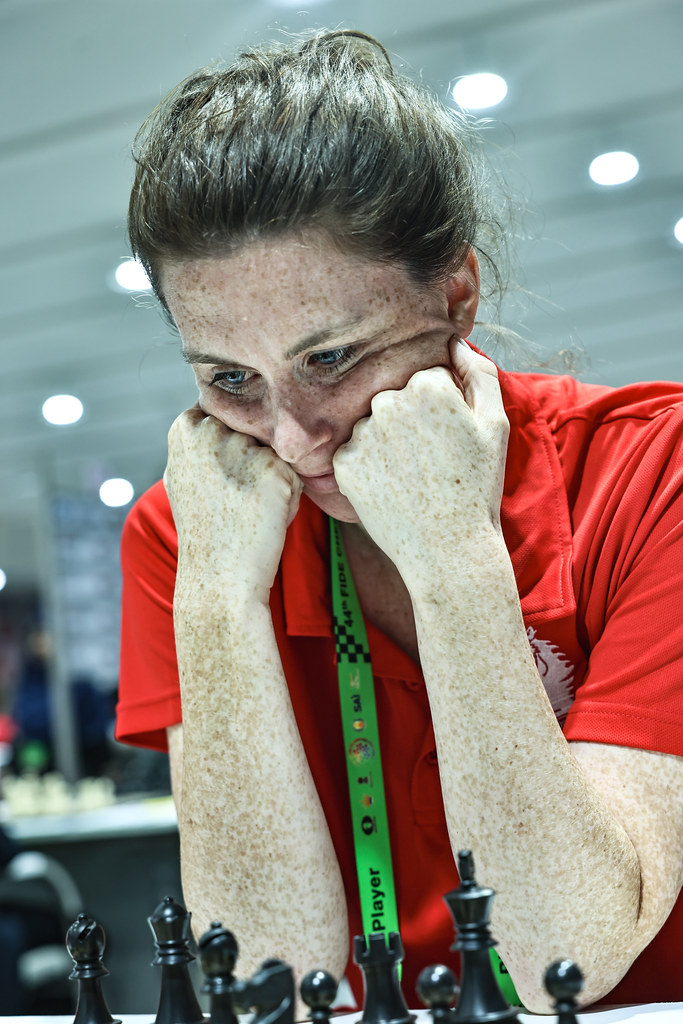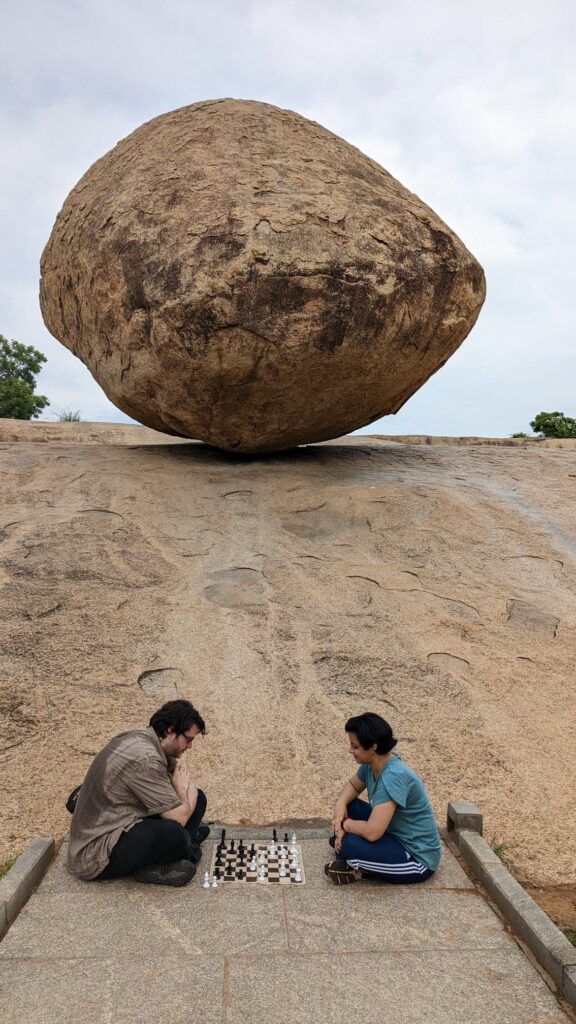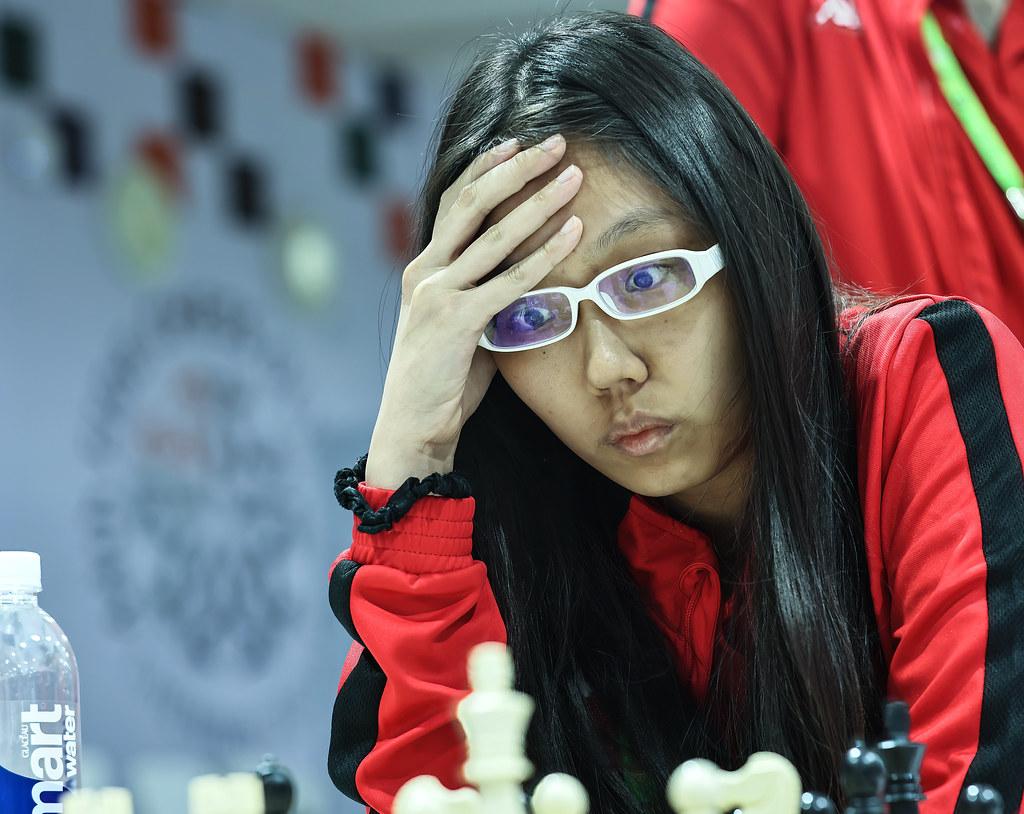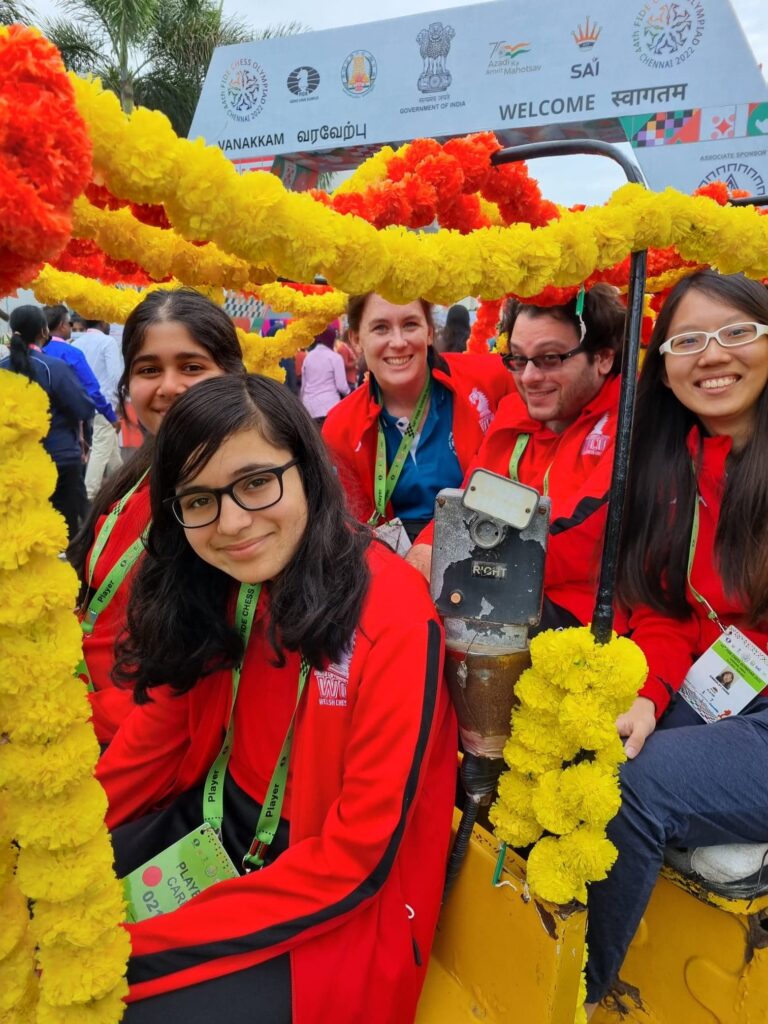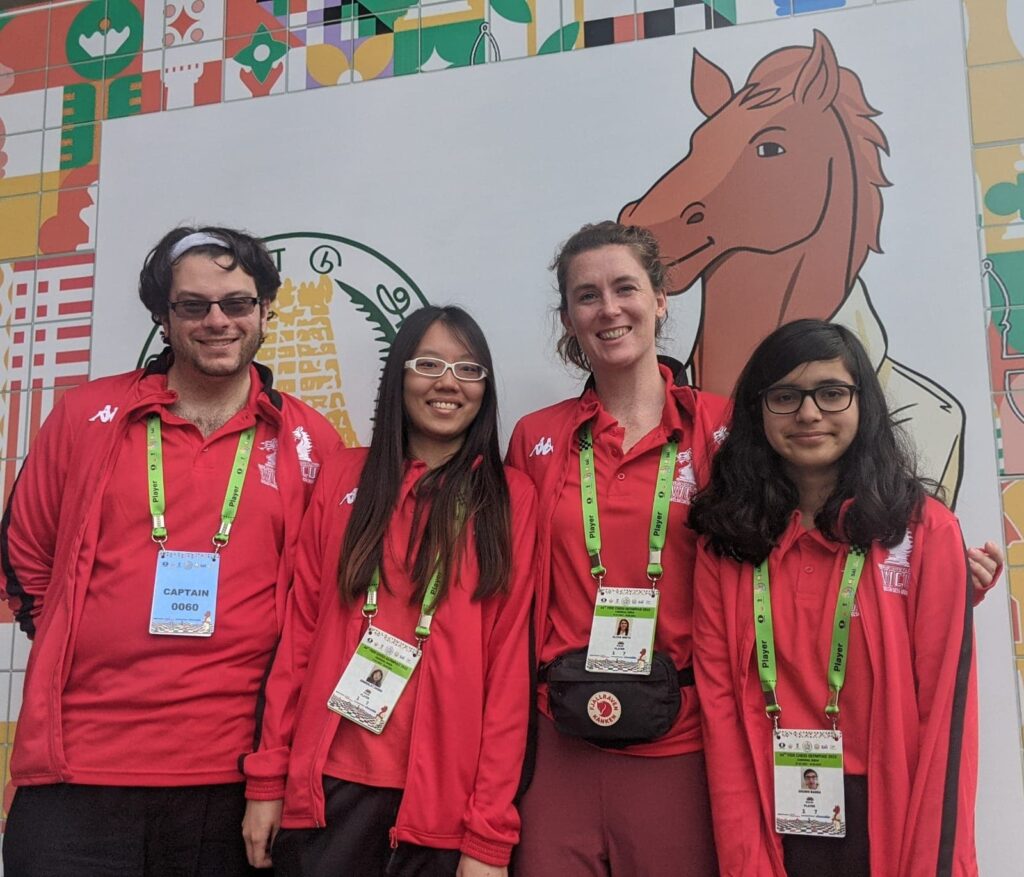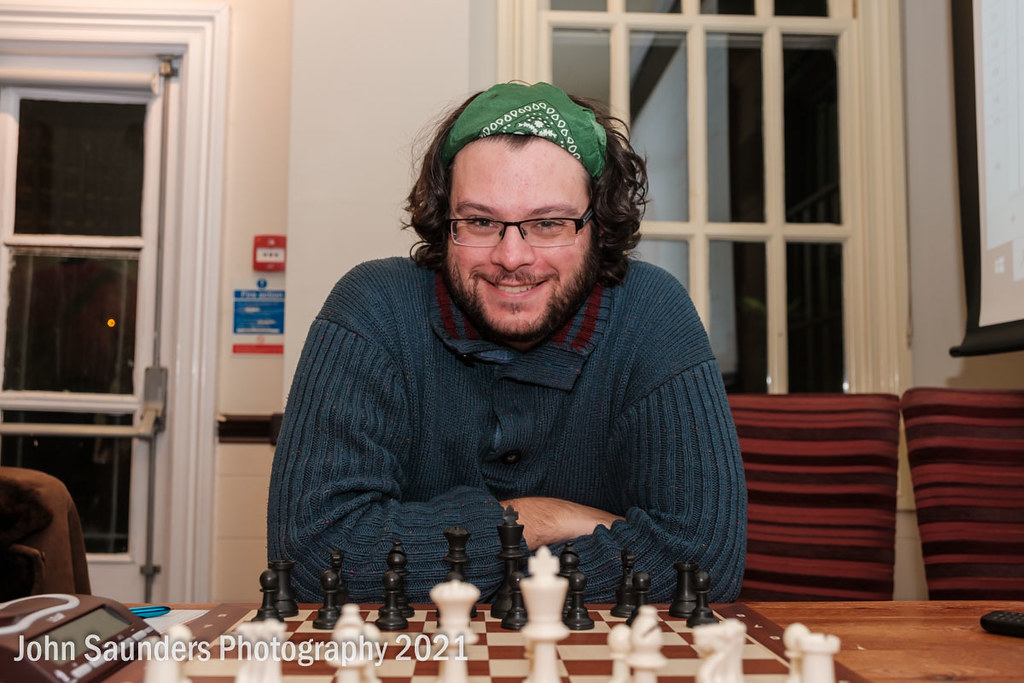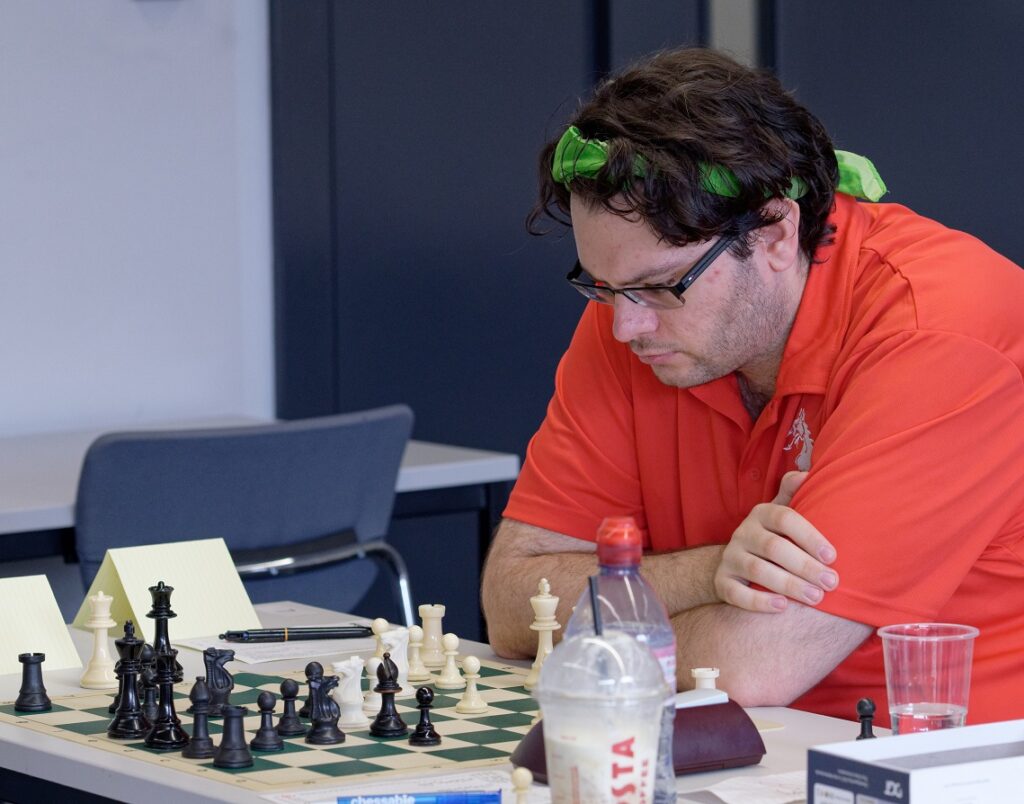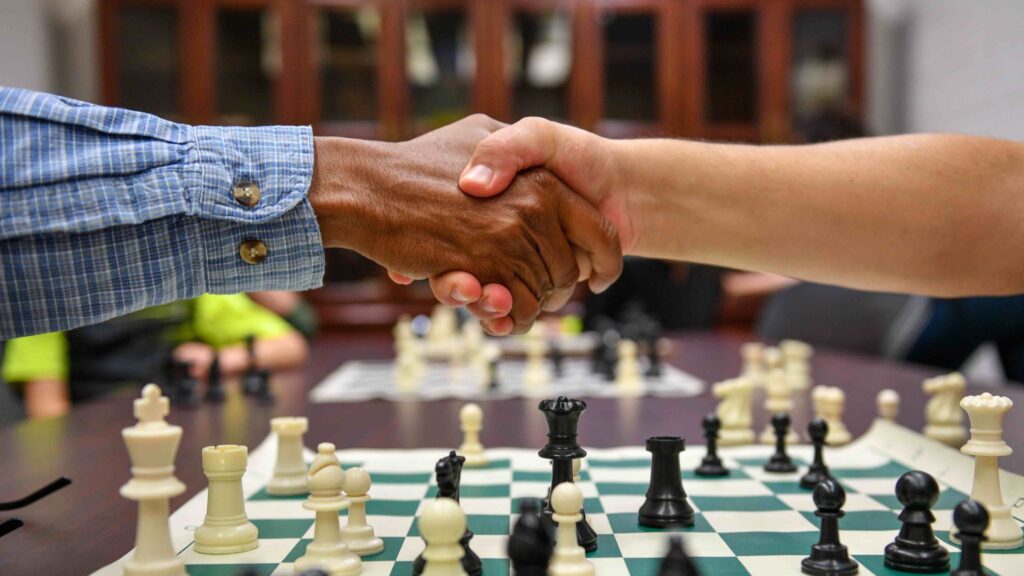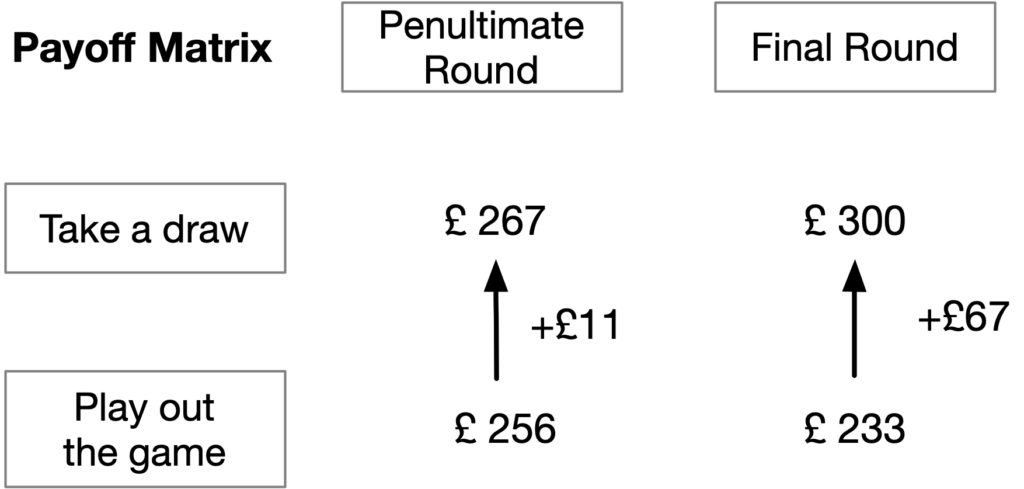The Olympiad is over and the exhausted Welsh captain is in reflective mood. Yet incredibly, he says he might be willing to do it all again in two years’ time – if the next Olympiad actually takes place that is
Michael Healey

Round 11 brings a change, an end-of-tournament 10am start against Fiji. I have a quick look over my team’s opponents, create a file for Kim on 1. e4 Nc6, and finish up my latest blog post; no sleep, as per usual in India. I’ve suggested an entertaining (temporary) opening line queen sac to Kim, but Liv is against it. Kim becomes a meek little Josh Waitzkin in Searching for Bobby Fischer, Liv the venerable master Ben Kingsley, and of course I’m Laurence Fishburne.
Kim’s looking at the line on the shuttle bus. I’m trying to convince her – what a way to end the tournament, her opponent will totally collapse – but it’s no good. She’s afraid. Later I’ll get entranced by a rook sac on f2 in Liv’s game, which she correctly passes up during a long think. Turns out street hustling don’t win no tournaments (the Kingston Invitational could have taught us that one!).
Some final wandering around Scum Hall. I won’t miss the bobbly carpetting and flimsy result signs which shake as you go past, making those of us sensitive about our weight feel like Godzilla taking on the skyscrapers of downtown Tokyo. There are so many teams I have interest in now. I bump into Tunisian Zoubaier Amdouni and complain he’s not yet an IM; “Covid, Covid – but soon!”
Both the Irish board four and the Jersette board one have ventured last-gasp Orangutans – good thing I taught my team that anti-Orangutan set-up! In Lula’s case she had promised me this one was coming, so the smile I expected. It’s a joyfully saccy game, and even though the reward is only a draw she’s now a provisional WCM. Elsewhere for the men Jersey could get some titles, but Wales’ Tim Kett needs just a draw. His opponent, needing a win, declines a perpetual, overpresses and Tim becomes an FM. He has performed at 2296 throughout the tournament, but this special Olympiad achievement is unlocked by getting over 65%. Everyone’s delighted.
Liv wins a calm game where she never looks troubled, deadly efficient with the tictacs; anyone facing her should properly fear that Petrov. Kim finds a nice opening win of the f7 pawn with check and converts. Hiya plays her new opening well, but underestimates a lightning attack. Maybe this game has come a bit too soon after yesterday’s heroics. Khushi is today’s heroine: the two players on bottom board have a joint rating under 2500, but if you’d told me this was a GM v GM game I wouldn’t be surprised. It’s major pieces and opposite-coloured bishops. I was talking to one of the team about this; was it Khushi? The initiative, go for the king!! I’m back being Vinnie in the park.
Khushi’s opponent plays the losing move so lackadaisically we’re both thrown. Surely Qf8 is mate? How tired am I? Khushi heptuple, octuple checks – while I doubt my sleep-deprived vision and ability to quantify time – before delivering checkmate. What a way for Wales women to finish up.

The boys have had a tough time against some real heavyweights, but achieve their seeding rank of 96 exactly. Three draws with GMs, but it could and should have been so much more. The girls lost a cumulative 100.4 rating points against the underrated world’s best, but somehow placed 86 off their 90 ranking. That captain must be some kind of genius.
The Jersettes offset the men’s troubles with more good news – at their first ever Olympiad they come fourth in rating group E. Indian WGM Vantika Agrawal, who Liv let off the hook in round one, has gained an IM norm. Clearly that near-disaster woke her up.
You probably know more about the big boys and girls than I do. We hear various stories (Polish Oliwia is doing slightly better than Welsh Olivia), but mostly I’ve been too tired and chessed out to show much interest. Kim regales us with tales of her chess crushes, Fabi and Magny and Davey H and all the rest. Instead I seriously wonder how super-nice-guy David Navara ever gets to the bathroom with all the door-holding us polite types have to do.
It’s been a complete whirlwind, and a sort of world tour as well. From the sizes and shapes (from tiny Nepalese to giant Sudanese), the outfits, the mannerisms, from holding hands to bare feet, choral singing on the coaches to masking up, the lack of respect for personal space and inability to lift the toilet seat to pee – it’s one giant cultural exchange. The African nations in particular, with their great competition for best-dressed team, are a joy; but they’re also fiercely competitive. Many an evening we’ve discussed how that Zimbabwean board three got on today – Jemusse Zhemba is certainly a name for your future fantasy chess leagues.
There’s a lot of stuff I don’t quite get: the politics, the myriad dignitaries having jollies, the very very important persons (VVIPs), the rules for nationality and country representation, what’s going on with China and Russia. But basically this is the best of the best from around the world in one place. Countries either at or verging on the point of war – Ukraine, Kosovo, Chinese Taipei – all sit and play happily, shades of Buenos Aires 1939. Covid hasn’t been a big thing here, a massive relief after the past two years. We’ve had daily temperature checks at the hotel, and some countries are permanently masked up (the Asian and island nations mostly, but also Australia and New Zealand, and of course all the staff and volunteer helpers, poor sods); for most it’s just a normal tournament.

Will this be the last great Olympiad? In two years the venue is supposed to be Budapest. Placed between two geopolitical hotzones, with waves of pandemics, a coming financial crash, green aviation taxes and a European black market supposedly filled with Javelin missiles, perhaps the betting on a return to Chennai isn’t so unlikely. Hungary would be nice though.
Will I be there? Well some Welshies have jokingly asked if I’d do it again, but I presume next time, with a stronger team, they’d want a stronger coach. It’s been a lot of fun, but I have felt like a caged animal at times, unable to sub in and contribute over the board. I’ve been lucky with my team (let’s face it, most teams probably would have either sent me home or be preparing to sue me for defamation at this point) and the strangely subdued expectations. Or maybe I could switch federations, and use my 1/8th heritage to create a Romany team.
Top-level women’s chess, even in Scum Hall, has really impressed me. It’s solid, even towards the lower end. Hiya is a young lady after my own heart, while Khushi and Kim clearly love a sac; watching Liv’s games up close has forced me to appreciate the nuances of chess strategy, conditioning, intense preparation and determination. And sleepiness.
The sheer numbers of young female players from non-western countries is either encouraging, or a bad sign – are they just coming the once, as teenagers, then going off for life and careers and marriage? Is chess a phase they’ll evolve beyond, forcibly or not? Beyond me, but currently they all seem teens to this old git.
Were I to do this again, I’d certainly transfer more stuff to databases (and maybe not take 44 [!] chessbooks in my luggage). Prep is so important, it’s like winding up a phalanx and letting it loose at the enemy line. If it hits, success. Should it veer right and miss, doom. It’s incredibly hard to beat even 1200-level players – they may make inexplicable opening mistakes, but give them enough time and they’ll find the best move in most positions. Overpress and you get sucker-punched.
Will I miss India? Well, I don’t really feel like I experienced much of it. Alex Bullen and Liv are off travelling for a bit, whilst Hiya is visiting relatives in Kolkata. I’ll miss the curries, and the awkward stardom; not so much the daily shuttles, the limited alcohol and the muzak blaring in the hotel lobbies. Dreary London is calling. I’ll sleep well on the 5am flight. And drink as much of BA’s whisky as allowed.

